|
Note: This article was originally published on February 12, 2020 and has been updated with new information! If you haven't figured it out by now, I really love propaganda posters. Especially those from World War I. But my absolute favorite poster artist is one no one seems to know anything about. 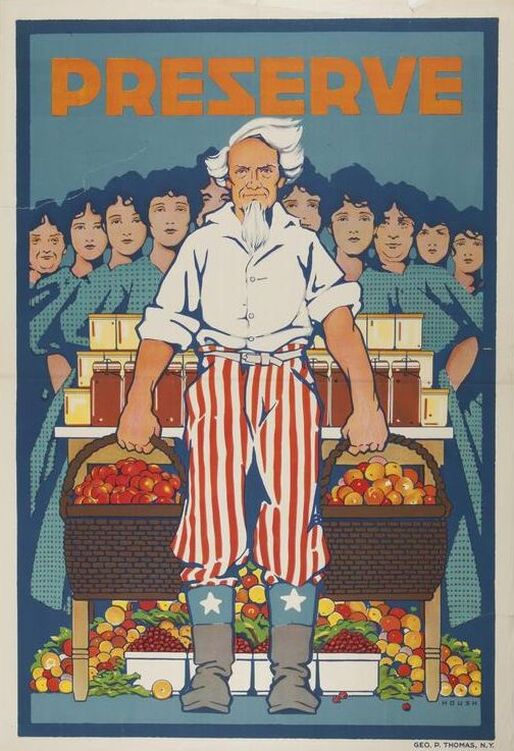 "Preserve" by Carter Housh. Here, Uncle Sam, in his trademarked striped trousers but without his blue frock coat stands in his shirtsleeves, rolled up to the elbow, holding baskets full of fruit. Behind him is a table laden with full canning jars, with fruit and vegetables overflowing a pile beneath the table and behind that an army of women all dressed in blue. Missouri Historical Society. Carter Housh was apparently born in 1887 and died in 1928. And aside from an illustration or two for McCall's magazine, he is known ONLY for these six propaganda posters, encouraging Americans to preserve food during the First World War. 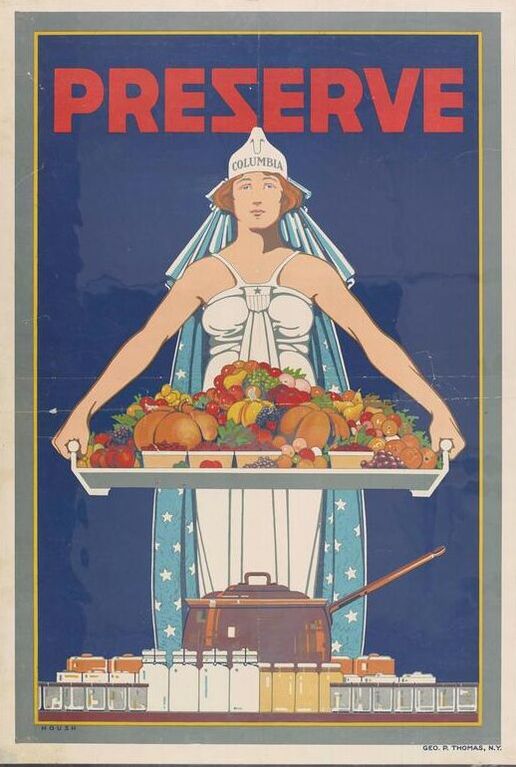 "Preserve" by Carter Housh. Here, a white-clad Columbia, goddess of America, with her French liberty cap and a star-spangled cape holds a massive tray laden with fresh fruits and vegetables. Below, an enormous handled saucepan and empty jars lined up before her, ready for filling. USDA Library Archive. As far as I can tell, nowhere else on the internet are all six of these posters displayed together. In fact, three of them were new to me! I discovered them as I was doing research on Housh, so that was delightful. 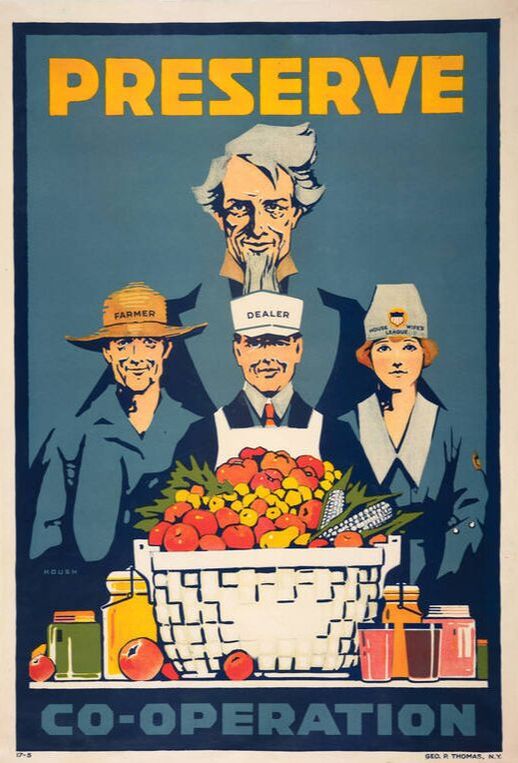 "Preserve" by Carter Housh. Here, Uncle Sam, again in his blue frock coat, looms behind three figures - a farmer in a straw hat, a "dealer" or greengrocer in white cap and apron, and a woman dressed in the official food preservation uniform with a white cap that reads "House Wife's League" stand before him. An enormous white basket of fresh produce, flanked by filled canning jars, sets on the table before them. Underneath reads "Co-operation," implying that preservation needs the cooperation of the farmer, the retailer, and the housewife, all under Uncle Sam's watchful gaze. Missouri Historical Society. Housh's work has been called "modern" before, but aside from the font with it's rather Z-looking S, the imagery and style seems very typical of the period. I love Housh's use of shadow and color-blocking and his depictions of produce are simply divine - perfect, gleaming, and blemish-free. Quite unlike the real world, alas. I particularly enjoy Housh's depictions of people and Uncle Sam is no exception. Uncle Sam was long used to represent the United States, but during the War James Montgomery Flagg's depiction in his famous "I Want YOU!" poster helped lead to a resurgence in use of Uncle Sam to represent the U.S. I'm particularly fond of Housh's version because he's less scrawny and stern looking than other incarnations. Plus, when he's hard at work, shirtsleeves rolled up, his hair gets a particularly nice wild swoop to it. One that isn't present in his more sedate depictions, like the poster below. One interesting thing about this time period is that both Uncle Sam and Columbia were used to represent the United States. The First World War is one of the last times the Greek-inspired secular goddess would be broadly used to represent America. 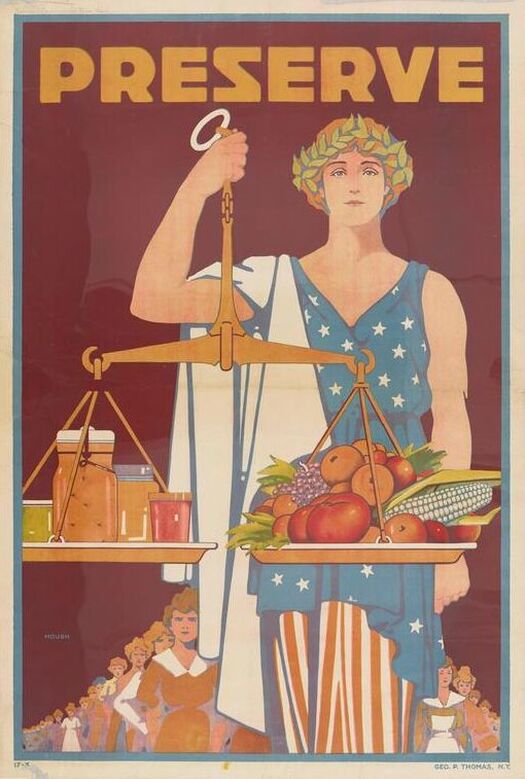 "Preserve" by Carter Housh. In this image, a different incarnation of Columbia, in a gown of star-spangled blue, red and white stripes, with a white draped sleeve and a crown of laurel, holds enormous scales depicting canned goods and fresh produce in balance. Lined up behind her stretching out into the distance is a variety of American housewives in varying dress. USDA Library Archives. As much as I love Uncle Sam, of course I prefer Columbia because she is just so Progressive Era - an inspiring mix of Greco-Roman, feminist, Romantic representation that doesn't exist anymore. Of course, today's American goddess would look quite a bit different, and probably would not be named after Columbus, and that's equally as wonderful. If you want to know more about Columbia, check out this overview from the Atlantic. Which of these beautiful posters is your favorite? And if anyone happens to find anything on Carter Housh (or his printer, George P. Thomas of New York), please send me the info! Update - more about Carter Housh!Apparently Susan Jackson took my request to heart! Here's what she has to say about Carter Housh, her grandfather! Carter Housh was my mother's father. He was married to Rae (Arnold) Housh Enright. He died when my mother, Barbara Belle (Housh) Gibson, was 13. He left due to illness and went out to South Dakota where he died. He also had a son, David Paine Housh, my mother's younger brother. His wife, Rae, remarried another artist, a political cartoonist and author of children's books, Walter J. Enright. I do not have much information on Carter otherwise, sadly, nor do I have a good picture of him (so far.) Thank you, Susan, for sharing this great biographical info! I did do a little more digging to see what else I could find and I did find a few more references, although fewer than you might expect. In 1910 he appeared to work as an illustrator for the Sunday edition of the Buffalo Times based out of Buffalo, New York. He also worked for several years for McCall's magazine between 1910 and 1916, leaving evidence of several magazine covers, courtesy Flickr and Magazineart.org, a delightful website mentioned in one of the Flickr postings. We see no further known references to Carter Housh until 1918, the height of the U.S. involvement in World War I, when he is mentioned in an exhibition of artists as one of the few people who sold designs. 1918 is also the date attributed to his stunningly beautiful "PRESERVE" poster series. The Art Alliance of America and the American Institute of Graphic Arts, 10 East Forty-seventh Street, are holding an exhibition of containers and labels consisting of boxes, bottles, cans and other containers in which manufactured products are enclosed for distribution; also the decorative labels used upon containers. Many bright and original sketches are show. Among those who have been fortunate in selling their designs are Rolf Stoll, A. L. Bairnsfather, Carter Housh, and Helen K. Bromm. The exhibition will continue throughout the month. Carter Housh died on Monday, May 14, 1928 in Custer, South Dakota. Two obituaries in New York newspapers were published, likely due to his connections to New York City and Buffalo, NY when he was an illustrator. One, "Carter Housh, Poster Artist, Dies in West," published in the New York Sun on May 16, 1928 reads: Carter Housh, Poster Artist, Dies in West Another obituary, "Carter Housh Dead," was published in the New York Times, also on May 16, 1928. Carter Housh Dead Clearly the New York Times was less interested in accuracy than the Sun. It is sad to learn his life was cut so short and one wonders what illness he died of. Still, he leaves a legacy of stunning art and his posters remain my favorites of the entire war. If anyone finds any more breadcrumbs, send them my way and I'll update again! And, as always, if you enjoyed this post, please consider becoming a member of The Food Historian. You can join online here, or you can join us on Patreon. Members get access to members-only sections of this website, special updates, plus discounts on future events and classes. And you'll help support free content like this for everyone. Join today!
5 Comments
Susan Jackson
3/22/2021 08:33:52 am
Carter Housh was my mother's father. He was married to Rae (Arnold) Housh Enright. He died when my mother, Barbara Belle (Housh) Gibson, was 13. He left due to illness and went out to South Dakota where he died. He also had a son, David Paine Housh, my mother's younger brother. His wife, Rae, remarried another artist, a political cartoonist and author of children's books, Walter J. Enright. I do not have much information on Carter otherwise, sadly, nor do I have a good picture of him (so far.)
Reply
3/24/2021 06:32:51 pm
Susan! How lovely to have this additional history on your grandfather, thank you so much for sharing!
Reply
6/20/2022 07:57:34 am
Thank you for such an enjoyable and well researched article! Love it!
Reply
1/9/2024 08:34:51 am
Interesting article! Don't you love it when a family member of someone you wrote about fills in some of the blanks?. I came across the Feb 1914 McCall's cover by Carter Housh elsewhere, and was struck by his use of 'negative space', & his signature font, both of which resemble the work of another, more well-known magazine cover artist of that era, Coles Philips. I wrote about Coles Phillips & included a couple of his covers in this article a few years ago - https://50plusworld.com/a-vintage-magazine-cover-christmas/.
Reply
Jeff Hynes
3/31/2024 07:31:04 am
Thanks for the article. I recently started collecting WWI posters and I came across the 2nd poster (blue background) Columbia and purchased it. These posters appear to be rare. I would rate it as A- condition. I had never seen any of his works before as they aren't mentioned in the major guides by Theofiles and Rawls.
Reply
Your comment will be posted after it is approved.
Leave a Reply. |
AuthorSarah Wassberg Johnson has an MA in Public History from the University at Albany and studies early 20th century food history. Archives
July 2024
Categories
All
|
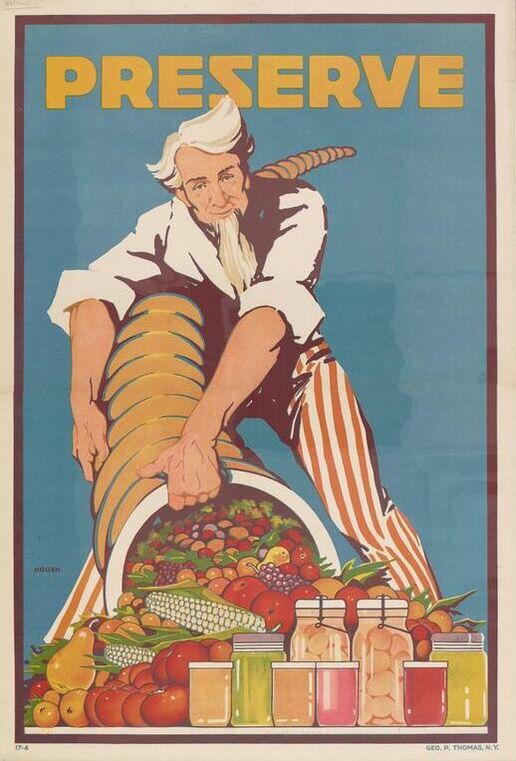
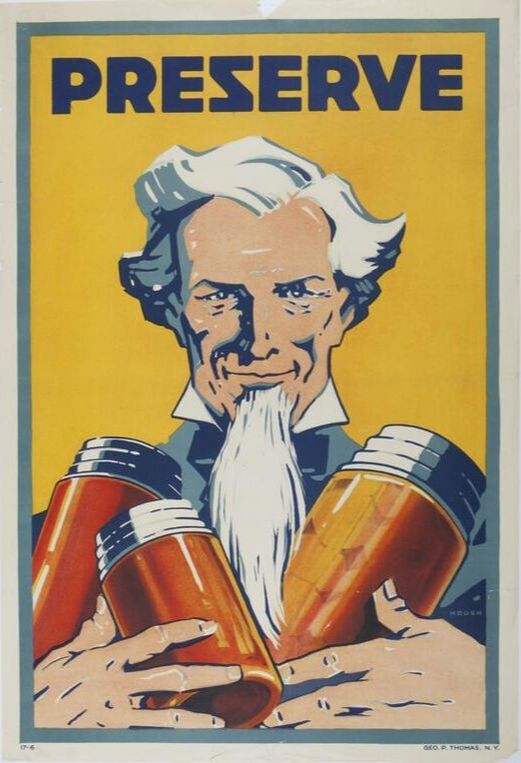
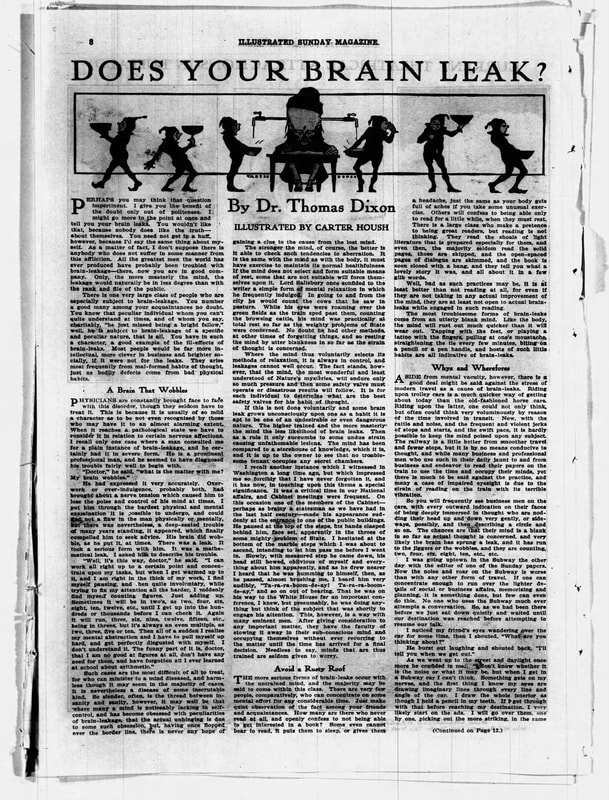
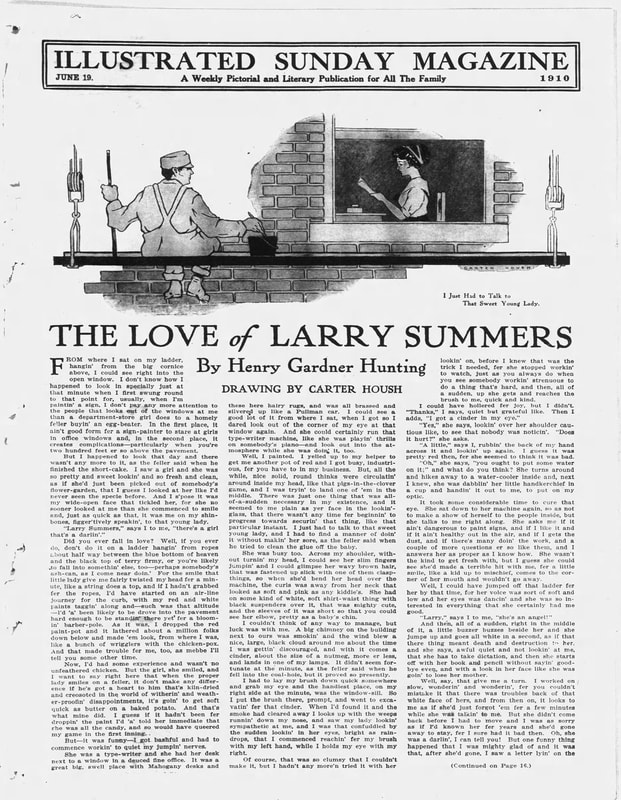
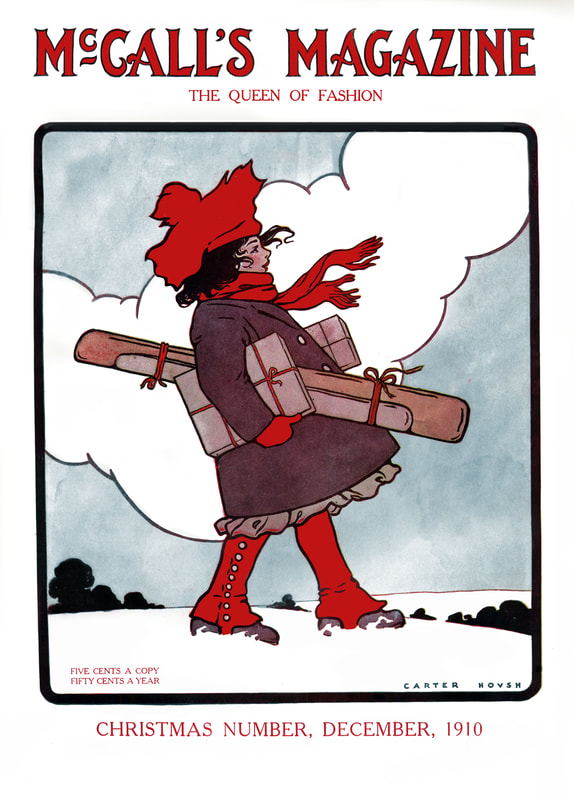
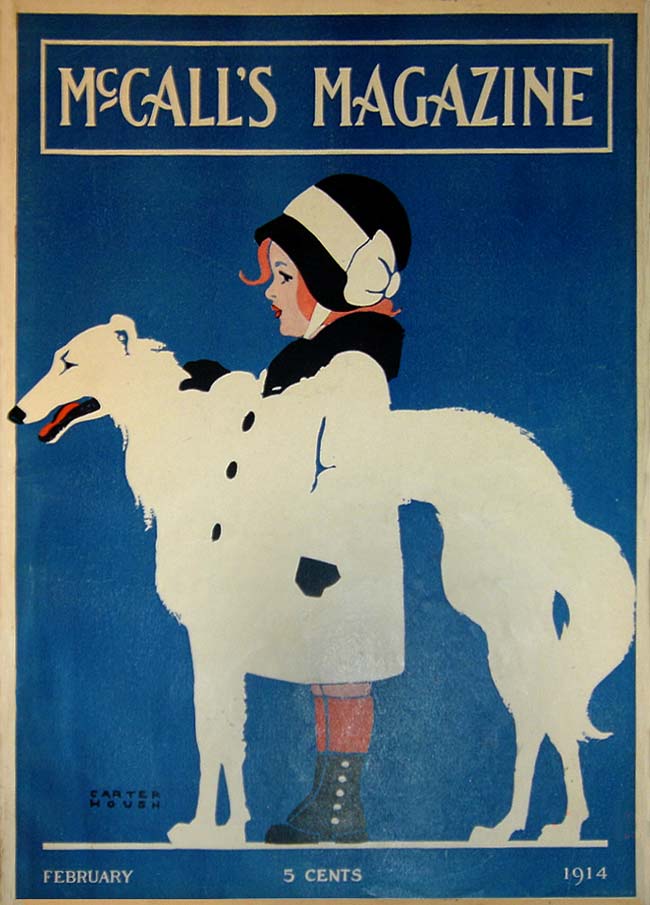






 RSS Feed
RSS Feed